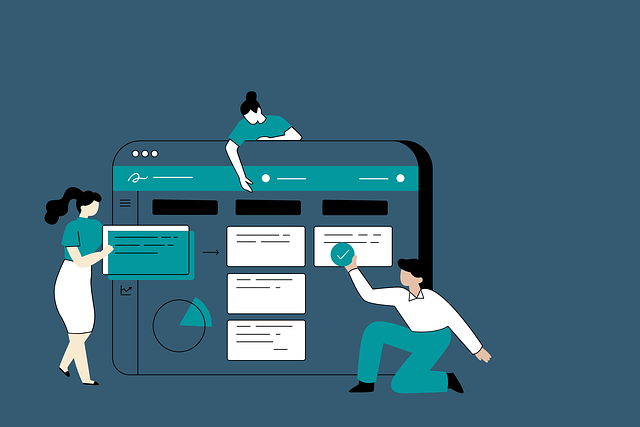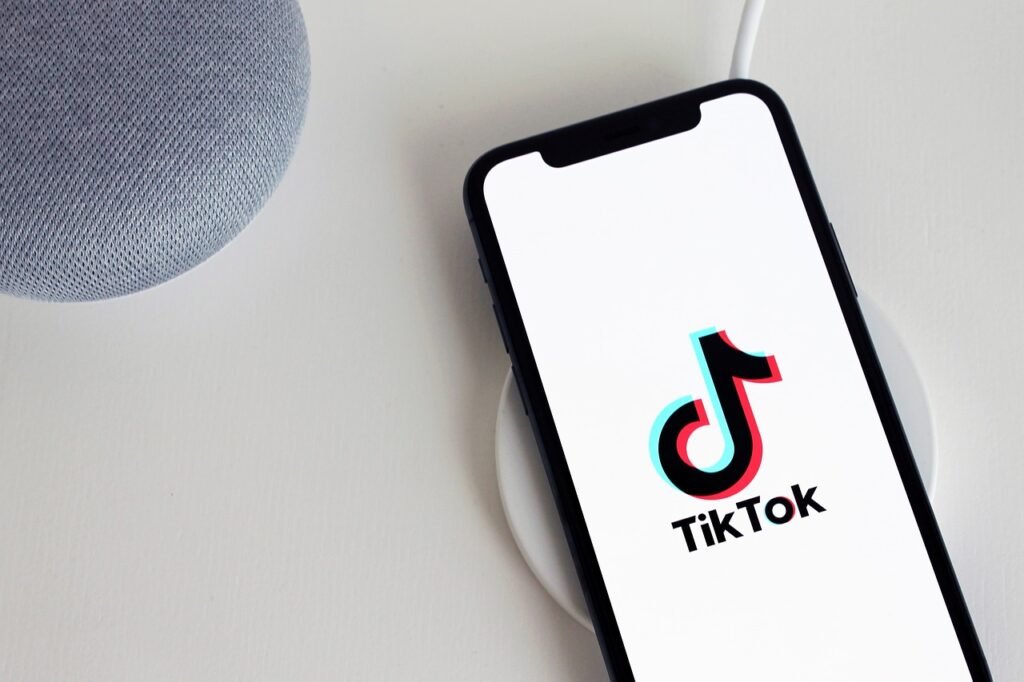Types of Marketing Channels
Getting a handle on the varied marketing channels out there is key to snagging that dream audience and fine-tuning your game plan. We’ll break it down into the nitty-gritty of direct and indirect marketing channels.
Direct Marketing Channels
In the hustle of direct marketing, customers snag what they need straight from the source—no middlemen messing around. This could mean clicking their way through your online store, swinging by a brick-and-mortar, mingling at a trade show, or even perusing a catalog in the comfort of their living room. The magic here is clear-cut: your stuff goes directly to the customer, cutting out the middle guy BDC.
| Direct Marketing Channels | Description |
|---|---|
| Online Sales | Shoppers make a beeline to your website or shop online. |
| Retail Stores | Goods hit the shelves in physical stores. |
| Trade Shows | Sell directly at expos and fairs. |
| Mail Order | Orders come your way via catalog or mail. |
Indirect Marketing Channels
Now, with indirect marketing channels, there’s a bit of a tango with intermediaries—folks like wholesalers, distributors, and the trusty retailers. These channels are the backstage crew, taking care of getting your stuff from A to B and dealing with the nitty-gritty logistics (Mindmatrix).
The aim? To get your brand so well-known that folks come knocking on your door on their own. It’s about playing the long game, letting referrals and engaging content do the heavy lifting until they’re ready to commit (VipeCloud).
| Indirect Marketing Channels | Description |
|---|---|
| Wholesalers | Buy big, sell to smaller stores. |
| Distributors | Keep the goods rolling and restock suppliers. |
| Retailers | Get the products to the end shopper. |
| Agents | Like a manufacturer’s personal hype squad. |
Knowing your way around these marketing channels lets you steer your strategy with finesse and connect with an audience that truly gets you. For more tips and tricks, you might want to check out resources like digital marketing channels and marketing channel strategy.
Benefits of Indirect Marketing
Using indirect marketing channels has perks that can do wonders for your brand and cash flow. Here, we’re zeroing in on a couple of goodies: building trust and boosting brand recognition, along with setting up a reliable cash register ring.
Building Trust and Brand Awareness
The name of the game with indirect marketing is to make folks think you’re the bees’ knees, someone they can count on. Unlike the hard sell of direct marketing, indirect marketing takes its sweet time to win hearts. When you keep serving up info that actually matters to your crowd, you turn into that wise owl in the room—trust builds up.
You’ll spot indirect marketing in action all over the place, from the web to your Twitter feed—and even beyond that. This nifty strategy gives you the freedom to crank out all kinds of content without making it feel like a hard sell to your peeps. Dive into their world by tackling their real-life issues and aspirations, which makes folks wanna stick around and maybe even tell others about you (VipeCloud).
By getting the hang of content marketing and SEO, your website turns into a lead machine, raking in three times more leads at a sweet 62% beanstalk off the usual costs. It becomes this 24/7 sales buddy that’s always on, never clocking out (VipeCloud).
| Marketing Type | Leads Raked In | Cost Cut (%) |
|---|---|---|
| Traditional Marketing | 1x | 0 |
| Indirect Marketing | 3x | 62 |
Consistent Sales Stream
Indirect marketing channels are like the gift that keeps on giving. When you’ve got a steady flow of decent content rolling out and relationships budding nicely, you’ve locked down a fan club that doesn’t jump ship for something shinier. These cool customers will think of you first when they feel like splashing some cash.
Social media marketing is a gem in the indirect marketing setup. It’s all about making connections and letting people know you’re not just a pretty face. By fueling the web with valuable nuggets and having genuine chats, you sway how they see you, and when it’s time to buy, your sales board lights up (VipeCloud).
Customers who dig your groove might stick around for a long time, dropping by for more and even bringing friends. Through this friendly marketing style, the one-offs can evolve into lifelong pals.
Curious for a deeper dive into marketing tactics? Swing by our marketing channels definition to get the full scoop.
Strategies for Indirect Marketing
Hoping to boost your brand without the hard sell? Indirect marketing’s your jam! Here are three slick moves to remember: talk with your audience through content, vibe organically on social media, and let your folks do the talking with referral and affiliate programs.
Content Marketing
Let’s start with content marketing – think of it as storytelling for your business. It’s not about shouting about your new product every two seconds but more about creating stuff folks actually want to read or watch. The secret sauce here is giving people info they find useful or entertaining, which makes them warm up to your brand without you having to grab their collars.
| Content Type | What It’s About | What You Get Out of It |
|---|---|---|
| Blogs | Chats and insights | Drives more eyes to your site and boosts SEO |
| E-books | Deep dives into topics | Collects leads when folks download |
| Infographics | Creative data explanations | Makes sharing easy, spreading your message |
| Videos | Videos that charm | Holds people’s attention like a pro |
Plenty of businesses (91% globally) swear by content marketing, not just because it works, but because it turns casual browsers into loyal fans who might just hit ‘buy’ when they’re good and ready.
Social Media Marketing
Chillin’ on social media isn’t just for tweeting about your lunch. It’s ground zero for indirect marketing where you can gather around with your audience like you’re at a neighborhood potluck. Posting authentic, engaging content isn’t just fun; it fuels the connection and trust with your followers, turning them into allies for your brand.
- Where to Hang Out:
By sharing bite-sized, interesting bits and jumping into conversations, you’re not just pushing sales but building an online community. And that’s what keeps followers clicking your page – not fleeing from ads.
Referral and Affiliate Programs
Turn your happy customers into your greatest promoters! Referral and affiliate programs are all about getting your satisfied clients to vouch for you. Give them a nudge with some incentives, and watch them let others in on how awesome you are.
- What’s in It for You:
- Cash in on their existing good vibes about you
- Cut down on spending to bring new folks in
- Spread your brand’s reach like wildfire
These strategies may not shove products into carts instantly, but they sure set the stage for a star performance later. You stitch together buyer relationships that are built to last, ensuring your brand isn’t just a one-hit-wonder. Curious for even more marketing wizardry? Check out digital marketing channels and learn about going anywhere and everywhere with omni-channel marketing solutions.
Challenges of Indirect Marketing
Indirect marketing channels are like that mysterious path in the woods—potentially full of surprise treasures, but you might trip over a few roots. Getting the hang of them can open doors to serious growth, yet they don’t come without their headaches. You’ve got measurement and attribution puzzles to crack, and the patience-testing wait for results.
Measurement and Attribution
Imagine trying to figure out which breadcrumb led Hansel and Gretel home; that’s kinda what measuring indirect marketing feels like. In direct marketing, you often get to point at a chart and say, “Check it out, that ad made us $$$!” But indirect marketing? It’s the long game of building trust. Understanding which tactic drew in a customer can be like solving a detective case where the clues are scattered over months. Sales that happen long after your marketing effort are especially tough to link back to a specific campaign or interaction.
| Challenge | What’s up? |
|---|---|
| Hard to Track | Directly measuring sales impact is like nailing jelly to a wall. |
| Can’t Pinpoint Conversions | Figuring out which channel hit the jackpot means juggling some snazzy analytics. |
To keep your marketing mojo, whip out some fancy analytical tools and key performance indicators (KPIs). These help trace the breadcrumb trail from customer chat to ka-ching.
Time to See Results
Think of indirect marketing as planting a tree—it won’t shade you right away, but future you will thank present you. Unlike those fast-paced, direct strategies that light up dashboards overnight, this method asks you to play the long game. It can be a total buzzkill when you pour effort in, and the response is crickets. Keeping your audience in the loop and gradually building a reputation takes gusto and grit.
| Timeframe | What to Expect |
|---|---|
| Short-term | Instant gratification? Nope. It’s a trust marathon. |
| Long-term | Slow and steady leads to that sweet, sweet growth. |
Don’t sweat it. Just keep nudging your audience with cool content—blogs, social media, loyalty shoutouts. Every touchpoint adds bricks to your brand wall, setting you up for those dreamy future sales.
Grappling with these issues is like trying to ride a bull—hang tight, steer with intention, and enjoy the wild ride. Hone strategies that spotlight clear tracking and embrace patience so your efforts don’t just meet expectations—they blow them out of the water.
Indirect Distribution Channels
Indirect distribution channels are like the middle players in a game of telephone in the business world. These often-unsung heroes link you, the manufacturer, with the people eagerly awaiting your product. Knowing who these players are and how they operate can up your game in getting your products into consumers’ hands.
Intermediaries in the Distribution Process
We’re talking about wholesalers, distributors, retailers, and agents—each a cog in the well-oiled machine of getting your goods out there. They make sure logistics, marketing, and sales are handled without dumping it all on your plate.
| Type of Intermediary | Function |
|---|---|
| Wholesalers | Buy ginormous batches from you and divvy ’em up for retailers. |
| Distributors | Tackle the logistics and storage, sometimes scoring exclusive rights to your products. |
| Retailers | Those guys selling directly to folks—be it in-store or online. |
| Agents | Your go-to sales squad, pocketing a share of each deal they seal. |
Roping in intermediaries? Genius move. They take on the heavy lifting like storage and transport, so you can keep your eyes on the prize—your business.
Benefits of Indirect Distribution
Teaming up with these channels dishes out quite a few perks:
More Eyes on Your Product: By teaming up with the right folks, you can spread your presence far and wide without going door-to-door yourself. It’s like suddenly having a nationwide sales force at your disposal.
Frugal Frenzy: Going indirect can be way cheaper than setting up your own delivery circus. Forget splurging on delivery trucks or warehouses—let others handle it (BDC).
Hone What You Do Best: Let your partners sell while you craft the next big thing, all while sharpening your marketing sword. You create; they distribute—it’s a win-win.
Local Know-How: Your intermediaries often know the terrain better than you, offering insights and strategies to tweak your offerings for regional flair (Mindmatrix).
Watch out, though—these partnerships can rack up extra costs and slow things down. The trick is in the balance—keeping a grip on your product’s journey while using intermediaries to their full potential. That’s how you win at the distribution game (marketing channel strategy).
Managing Indirect Sales Channels
So, you wanna ace the indirect sales game? Getting a grip on these channels is key to squeezing the most out of your marketing plan. When you have it all organized, it leads to better teamwork, keeps tabs on how you’re doing, and makes sure you’re hitting those business targets.
Channel Integration for Efficiency
Hooking up with indirect sales channels means lining up partners who will happily head towards shared goals. When this is done right, your company gets its foot in more doors, boosts its brand, and rings up more sales (Sales Xceleration). Here’s what to think about when bringing everything together:
- Picking Partners: Go for folks who vibe with your company’s values and game plan.
- Chat It Up: Keep the chit-chat open and constant about goals, hiccups, and what’s working.
- Train Hard, Sell Easy: Give out solid training and tools so partners can push your stuff like pros.
To showcase why this integration counts, peek at this cheat-sheet for some killer practices:
| Integration Practice | Description |
|---|---|
| Regular Hangouts | Set up regular catch-ups with partners to jaw about results and sort out snags. |
| Buddy Marketing | Team up on marketing stuff so everything looks the same everywhere. |
| Shared Tech Gear | Use tech like CRM or teamwork apps to keep things flowing smoothly. |
Performance Measurement and KPIs
Want to see if your indirect channels are pulling their weight? You’ll need some slick performance metrics in place. KPIs are like your progress report—letting you see what’s popping, what needs tweaking, and backing everything up with numbers. Here’re some KPIs hotshots often use:
- Sales Boom: Track how much sales are climbing through your partners.
- Partner Beatcheck: Size up how each buddy’s sales stack up to the goals set.
- Customer Cheers: Collect how folks feel about partners and refine service tactics.
Dig this table on possible KPIs to keep an eye on indirect sales channels:
| KPI | Definition |
|---|---|
| Sales Boom | Percent boost in sales over a set timeframe. |
| Partner Stash | Percent of entire sales thanks to each partner. |
| Customer Payback | What you get back from indirect marketing spends. |
Running indirect sales channels like a pro means always keeping an eye out and rolling with market punches. Build solid bonds, dish out the help, and you’re looking at long-term success. For more tips, check out our reads on marketing channel success and keeping up with marketing mates.
Future Trends in Indirect Channels
Indirect marketing channels are changing faster than your phone’s software updates. To keep your business from being left in the dust, you’ve got to keep up with these trends—especially the digital shake-up and going green.
Digital Transformation
Everything’s going digital, and it’s not about to slow down. Businesses are hopping on the tech bandwagon to revamp how they sell stuff and get in touch with customers. This shift brings in fancy tools like data analytics (think of it as a crystal ball for market insights), automation, and CRM systems to call the shots on customer relationships. It’s all about nailing your audience and getting more bang for your buck.
| What’s in it for You | Why it Matters |
|---|---|
| Chat Like You Know ‘Em | Personalized marketing for customers |
| Numbers That Make Sense | See what works with spot-on data |
| Get Stuff Done Faster | Robots doing the boring stuff—finally |
| Keep More Cash | Save on traditional, outdated tactics |
Jumping on the digital marketing wagon isn’t just smart—it’s necessary. Automate, analyze, adapt: it’s your new mantra for keeping up with what customers crave and staying ahead of the game.
Sustainability Initiatives
Going green isn’t just a trend; it’s a demand. More folks want brands that do right by Mother Earth, making sustainability a game-changer for indirect marketing channels. So, how do you keep Mother Nature (and your customers) smiling? Cut down waste, use earth-friendly packaging, and make sure your stuff comes from good places.
| Eco Moves | What It Does |
|---|---|
| Nature Knows Best Packaging | Less trash, more happy shoppers |
| Fair and Square Sourcing | Builds trust with ethically-minded buyers |
| Greener Roads | Save the planet and some cash on the way |
Bring green practices into your marketing channels and watch as your brand shines brighter and your wallet gets thicker. Save the world; save money—it’s a win-win.
As digital and green paths pave the future for indirect marketing, savvy business minds know they need to lead this parade. Whether you’re steering the ship as CEO, CMO, or the own-it-all entrepreneur, staying savvy on these trends keeps your business thriving and responsible. Time to step up and show your customers you’re both smart and sustainable.
Direct vs. Indirect Distribution Channels
Picking between selling straight to your customer or letting someone else do it can really shake up your marketing game. Getting a handle on how much control you want versus the costs, and peeking at how big dogs like Amazon handle their biz, is key for making your approach shine.
Control and Cost Considerations
When you take the direct route, you’re the boss of every little detail from start to finish. You get to chat with customers directly, helping you tweak things fast to keep them happy (BDC). It might even save you some cash down the line since you’re dodging those middlemen fees, which could mean more money in your pocket.
Now, if you go the indirect way, you let wholesalers or stores do a bunch of the work. They make it easier to get started and handle some of the tough stuff. But, they take their cut, which can bump up the price your customers pay (Investopedia).
Here’s a bit of a quick comparison:
| Aspect | Direct Sale | Indirect Sale |
|---|---|---|
| Control | You’re in charge | Middle to low |
| Cost | Cheaper, fewer links in the chain | Pricier, because of the go-betweens |
| Customer Connection | You talk directly | They play telephone |
| Managing Stuff | Simpler, less chaos | More complex, juggling vendors |
| Flow | Potentially smoother | Might get tangled in red tape |
Amazon’s Distribution Strategy
Amazon’s got their fingers in both pies with how they sell things. They offer goods directly for a straight-up shopping experience while also giving other sellers a place to hawk their wares, mixing both direct and indirect methods (Investopedia).
This blend lets them offer loads of goodies while using different sellers’ expertise, creating a far-reaching network for getting stuff where it needs to go. If you’re diving into distribution methods, looking at what Amazon does might spark some ideas for getting the best of both worlds and really expanding your reach.
If you’re itching to learn more about marketing distribution channels or distribution channels in marketing, taking a look at some examples and success stories can give you the edge to boost your channel game.





















